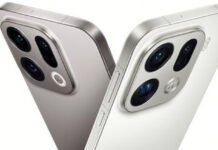The smartphone industry is abuzz with rumors and speculations as Apple prepares to make its highly anticipated entry into the foldable phone market. With giants like Samsung, Motorola, and Huawei already offering cutting-edge foldable devices, Apple’s potential launch of a foldable iPhone is poised to set a new benchmark in the segment. Here’s an in-depth look at what we know so far and what this innovation could mean for the future of smartphones.
Apple’s Foldable iPhone: Expected Launch Timeline
Recent reports suggest that Apple may unveil its foldable iPhone in 2026, likely during the latter half of the year. While the tech giant has not confirmed the launch date, insiders believe that Apple is strategically planning to refine its design and technology to outshine competitors in this increasingly saturated market.
Industry experts predict that Apple’s entry will not be a simple iteration but a groundbreaking redefinition of foldable technology. If Apple sticks to its usual product announcement schedule, we might see the foldable iPhone debut during a major fall event, aligning with its history of unveiling flagship products.
Design and Build: Innovation Meets Durability
One of the most intriguing aspects of the foldable iPhone is its design and durability. Apple is rumored to be working on a robust hinge mechanism that will ensure smooth folding without compromising the device’s lifespan. This hinge, possibly crafted from premium-grade materials, is expected to endure thousands of folds and unfolds without showing wear.
The display technology is also a key focus. Apple might employ flexible OLED or micro-LED screens, which promise higher brightness, superior color accuracy, and energy efficiency. These advancements could give the foldable iPhone a significant edge over competitors, offering users a seamless, immersive experience whether the device is folded or fully opened.
Form Factor: Book-Style vs. Clamshell
While the exact form factor remains a mystery, speculations are rife about whether Apple will adopt a book-style design, similar to the Samsung Galaxy Z Fold series, or a clamshell design like the Motorola Razr. Both formats have their unique advantages, and Apple’s decision will likely hinge on extensive user research to cater to its premium audience.
A book-style foldable iPhone could feature a larger, tablet-like display when unfolded, ideal for multitasking and productivity. On the other hand, a clamshell design might appeal to users seeking a compact, pocket-friendly option with all the functionality of a standard iPhone.
Performance and Hardware: A Step Ahead
Apple’s foldable iPhone is expected to feature a next-generation processor, possibly from the A-series or M-series chips, ensuring unparalleled speed and efficiency. Leveraging its in-house silicon, Apple could deliver faster performance, enhanced AI capabilities, and better power management compared to current foldable phones.
In terms of camera technology, the foldable iPhone might include advanced lens systems that rival professional cameras. Features like improved low-light performance, computational photography, and 8K video recording could be standard. Moreover, Apple’s emphasis on machine learning could unlock innovative camera features, redefining mobile photography.
Operating System: Optimized for Foldable Experiences
Apple’s foldable iPhone will likely run on a specially optimized version of iOS, possibly tailored for foldable devices. This OS may introduce unique features like split-screen multitasking, drag-and-drop functionality, and enhanced app compatibility to take full advantage of the foldable display.
Developers can also expect Apple to release new tools in its SDK, encouraging them to create apps that leverage the foldable form factor. This ecosystem-driven approach could result in a wealth of optimized apps by the time the device hits the market.
Battery Life: Maximizing Efficiency
Battery performance is a critical concern for foldable devices, and Apple is expected to tackle this challenge head-on. The foldable iPhone may feature a dual-cell battery system, offering extended usage while maintaining a slim profile. Coupled with Apple’s advanced power optimization technologies, users can anticipate a device that balances performance with endurance.
Price and Market Positioning
Apple has always positioned itself as a premium brand, and the foldable iPhone is expected to carry a premium price tag. Industry analysts estimate the starting price to be between $1,500 and $2,000, depending on the model and storage configuration.
While this may seem steep, Apple’s loyal customer base and reputation for quality are likely to drive demand, especially if the device delivers groundbreaking features that justify the cost.
Apple’s Strategy in the Foldable Market
Entering the foldable market is not just about launching a new product; it’s about redefining a category. Apple’s strategy will likely focus on addressing the pain points of current foldable phones, such as display durability, hinge reliability, and software optimization. By doing so, Apple can position its foldable iPhone as a superior alternative to existing options.
Furthermore, Apple’s extensive ecosystem—spanning devices like the Apple Watch, iPad, and MacBook—could provide seamless integration with the foldable iPhone, enhancing its appeal.
Competition in the Foldable Space
The foldable smartphone market is currently dominated by brands like Samsung, Motorola, and Huawei. Samsung’s Galaxy Z series has set the benchmark with its innovative designs and robust technology, while Motorola has gained traction with its nostalgia-driven Razr models.
Apple’s foldable iPhone will need to offer distinctive features to stand out in this competitive landscape. By leveraging its expertise in hardware and software integration, Apple is well-positioned to challenge the dominance of these established players.
Why Apple’s Foldable iPhone Could Revolutionize the Market
Apple has a history of entering established markets and transforming them with innovative products. The iPhone revolutionized smartphones, the iPad redefined tablets, and the Apple Watch became a leader in wearables. With the foldable iPhone, Apple has the opportunity to set new standards for design, functionality, and user experience in the foldable space.
Final Thoughts
The launch of Apple’s foldable iPhone has the potential to be a game-changer for the smartphone industry. While the exact details remain under wraps, the anticipation surrounding this device is a testament to Apple’s ability to captivate the market. If the rumors hold true, the foldable iPhone will not only meet but exceed the expectations of tech enthusiasts and loyal customers alike.
As we await more concrete information, one thing is clear: Apple’s foldable iPhone could redefine the future of mobile technology, combining innovation, elegance, and unparalleled performance into a single device.
Stay tuned as we continue to track the latest updates on this exciting development.
















